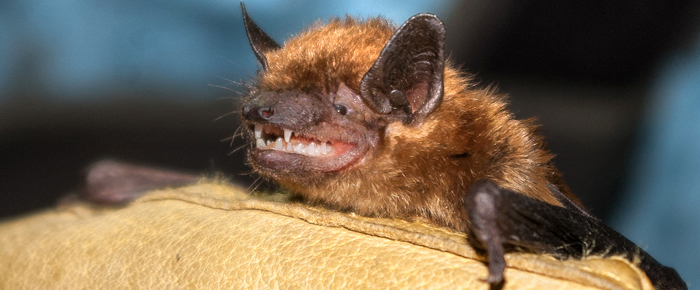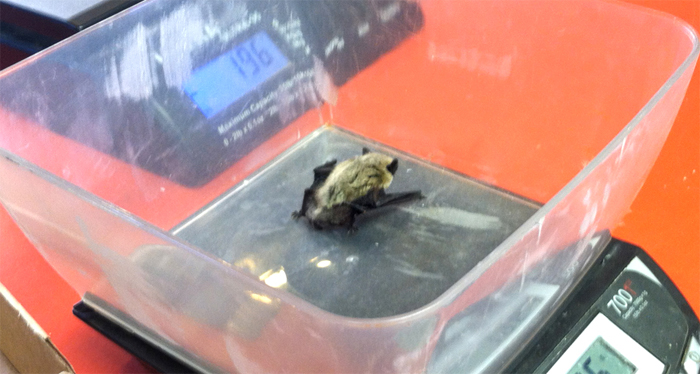
By Heidi Simmons
There is only one mammal that can fly. The bat. It is an amazing creature that shares a genetic heritage with humans – live birth, hair, warm blood.
This time of year, the bat is a symbol for the scary things that happen after dark. They are often considered dangerous, mysterious and creepy. And there is some truth to these fears.
The bat has captivated humans for millennia. They live around the globe and are a part of mythology, heraldry, folklore and legend. It has spawned associations with villains and heroes such as the great Count Dracula and Bruce Wayne’s Batman.
Bats are truly remarkable creatures worthy of respect and admiration. But they are also creatures that are known to carry and spread disease, which certainly has contributed to our fear of this strange animal that travels and hunts by echolocation.
Living in the Coachella Valley, the only way to not see bats is to never go outside after dusk. These bizarre flying animals eat a lion’s share of insects and are an extremely important part of the planet’s biodiversity.
After the sun sets, bats come out from our surrounding mountains and desert to flit and flutter, zip and zag, turn and tuck to chase down nearly invisible insects. It is rare to see these elusive nocturnal creatures up close. And that’s the way it should be.
When I found a little bat screeching in my yard, clinging to the stones around the pool, I gave it space. It was a tiny, fuzzy brown creature with leathery wings, long toenails and a snout like a dog. Other than its sad baby-like cries, it was adorable. It seemed like he (?) was asking for help. I decided I’d only intervene if he was still there in the morning. He was.
Something was wrong. He needed help.
I searched the Internet and then contacted our valley’s award winning zoo and gardens, The Living Desert. Both the Internet and the zoo’s expert expressed in no uncertain terms do not touch a bat with bare hands.
I put on garden gloves, found a small sturdy box with a tight fitting lid and went to help the little guy.
With a stick I use to save bees from the pool – a sturdy foot-long branch that would rival Harry Potter’s wand – I gently nudged the bat into the box. He didn’t fight and seemed glad to crawl into the dark.
Upon arrival at the zoo, I was given a yellow form to fill out. It requested all my contact information, and asked how and where the creature was found. It also served as a release to turn over the creature to the zoo. It is against the law to keep any wild animal without a license. I signed the document.
With care and compassion, a young female rehabber with the zoo came to take the bat. Curious and impressed with the level of professionalism, I asked to see the process of taking in, injured or sick creatures.
Like many in the CV, I love nature and have a compassion for all living things. I was relieved to see those working at The Living Desert do as well.
Separated from the exhibits, and tucked back beyond the entrance not far the animal hospital, is a clean exam room and office. The facility is well lighted, with cages of varying sizes and sterile things you find in a doctors office, everything was well organized. The only creatures in the rehab were several baby tortoises the size of a silver dollars.
 The rehabber, donned thick construction gloves and did a quick check of the animal. She weighed him: three grams. She put the bat in a creature-carrier and fed him, but he wouldn’t eat the fresh mealworm. He started walking around biting at the cloth under his tiny feet. The bat needed to see the doctor. Something was wrong.
The rehabber, donned thick construction gloves and did a quick check of the animal. She weighed him: three grams. She put the bat in a creature-carrier and fed him, but he wouldn’t eat the fresh mealworm. He started walking around biting at the cloth under his tiny feet. The bat needed to see the doctor. Something was wrong.
Although we all hoped the little creature could be released back in the wild with a clean bill of health, it seemed unlikely.
The Living Desert is a world-class zoo. There is a protocol to follow to keep all the animals safe and healthy.
Indeed, the little bat’s behavior worsened and the Living Desert called Riverside Animal Control for pick-up. The bat was taken to the Thousand Palms facility where it was re-evaluated. The creature was euthanized. After a vivisection, carefully contained tissue samples were sent to a Riverside laboratory where it was confirmed: the bat had rabies.
Turns out, there is a growing increase of rabies in the bat population. Because I had come in contact with the small creature, I was interviewed by the County’s Health Department. I had to answer questions about my health, about where I found the bat, how I handled it and if the creature was near my dog or anyone else in my household.
Rabies is a public health issue. Although rare in humans, it can be fatal if untreated. Riverside County Public Health stated in a press release last August that, in the past five years, Riverside County has coordinated approximately 300+ tests involving bats. Most of the tests (214) involved a random bat that someone found and turned into an animal control agency – no exposure suspected.
Since 2010, the county has tested only 16 bats that a person has had contact with and, of the incidents, four tested positive for rabies. Pets with bat contact account for 41 incidents during the past five years. Of those, seven bats tested positive for rabies. Add the little bat in my yard, and that’s eight rabid bats.
Everyone involved with the little bat took its condition seriously. The bat was treated with respect and compassion. His life ended humanely. His removal from the local population helped prevent the further spread of this dreaded disease. His little life provided a service to those who monitor the natural world and its impact on the human population. His life mattered.
Officials could only speculate why the rate of rabid bats is up — perhaps the drought? Lab information is shared with biologists at the University of California, Riverside.
Humans have a responsibility to care for and protect the natural world. It serves all mankind to ensure the planet maintains a healthy biodiversity.
Bats play an import role in the ecosystem. Like all wildlife, they need to be respected. If you come in contact with a sick or injured bat, don’t touch it. Call County Animal Control.
The treatment for rabies is a series of shots. It can be very painful. Now that’s scary. Have a safe and happy Halloween. Long live the glorious and mysterious bat.
For more information on bats and rabies go to www.rivcoph.org











































